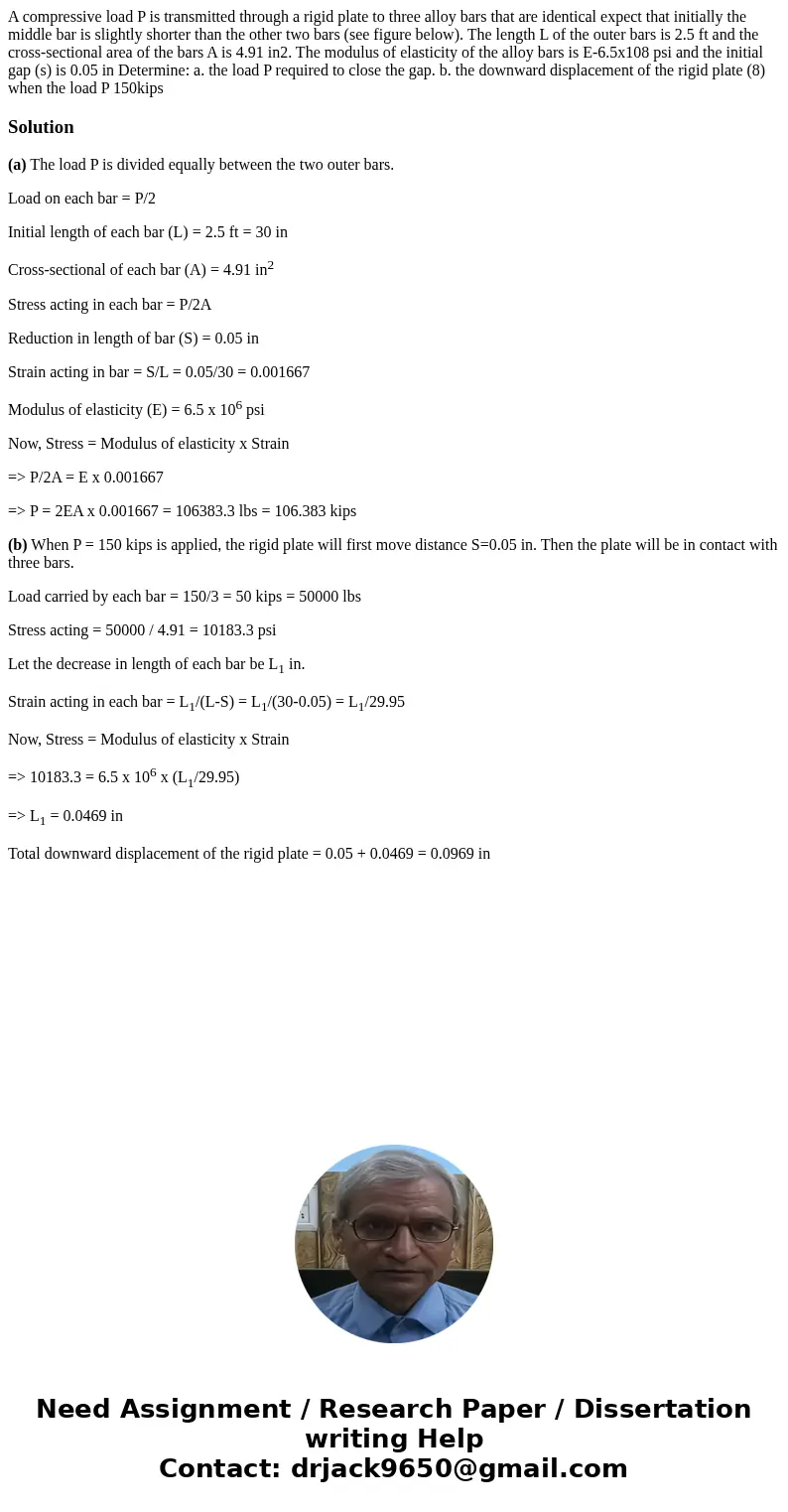A compressive load P is transmitted through a rigid plate to
Solution
(a) The load P is divided equally between the two outer bars.
Load on each bar = P/2
Initial length of each bar (L) = 2.5 ft = 30 in
Cross-sectional of each bar (A) = 4.91 in2
Stress acting in each bar = P/2A
Reduction in length of bar (S) = 0.05 in
Strain acting in bar = S/L = 0.05/30 = 0.001667
Modulus of elasticity (E) = 6.5 x 106 psi
Now, Stress = Modulus of elasticity x Strain
=> P/2A = E x 0.001667
=> P = 2EA x 0.001667 = 106383.3 lbs = 106.383 kips
(b) When P = 150 kips is applied, the rigid plate will first move distance S=0.05 in. Then the plate will be in contact with three bars.
Load carried by each bar = 150/3 = 50 kips = 50000 lbs
Stress acting = 50000 / 4.91 = 10183.3 psi
Let the decrease in length of each bar be L1 in.
Strain acting in each bar = L1/(L-S) = L1/(30-0.05) = L1/29.95
Now, Stress = Modulus of elasticity x Strain
=> 10183.3 = 6.5 x 106 x (L1/29.95)
=> L1 = 0.0469 in
Total downward displacement of the rigid plate = 0.05 + 0.0469 = 0.0969 in

 Homework Sourse
Homework Sourse